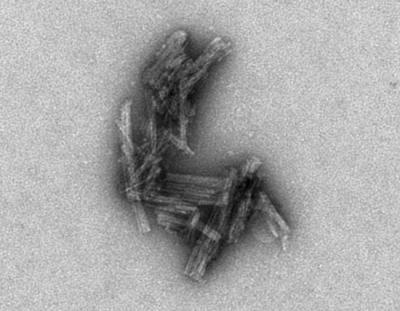Findings could lead to early diagnosis, better treatment studies

Credit: NIAID
WHAT:
An ultrasensitive test has been developed that detects a corrupted protein associated with Alzheimer’s disease and chronic traumatic encephalopathy (CTE), a condition found in athletes, military veterans, and others with a history of repetitive brain trauma. This advance could lead to early diagnosis of these conditions and open new research into how they originate, according to National Institutes of Health scientists and their colleagues. In their new study, published in Acta Neuropathologica, the researchers explain how they adapted a diagnostic test originally developed for prion diseases to detect abnormal clusters of tau protein. Like other proteins involved in neurological diseases, tau protein clusters can seed themselves and contribute substantially to the disease processes of Alzheimer’s and CTE. The study involved brain samples from 16 Alzheimer’s patients, two boxers with CTE, and numerous control cases involving other brain diseases.
The test is extremely sensitive. For example, if a pinhead-sized sample of brain tissue from an Alzheimer’s patient were pulverized and diluted into a thousand gallons of liquid, the test still could detect tau seeds in a pinhead-sized volume of that dilution. The test is called AD RT-QuIC: Alzheimer’s disease real-time quaking induced conversion.
Scientists at NIH’s National Institute of Allergy and Infectious Diseases developed RT-QuIC about a decade ago to detect Creutzfeldt-Jakob (CJD) and other prion diseases. Since then, they have repeatedly improved and adapted it to detect other neurological diseases, such as Parkinson’s and dementia with Lewy bodies. The test, which already is used in clinical settings to diagnose sporadic CJD, is noted for its rapid and accurate results.
Their latest findings could be a major advance for Alzheimer’s diagnostics because the study points to tau seeds as potential biological “markers” for Alzheimer’s disease in the brain. Scientists are testing therapies to slow the accumulation of tau clusters and the progression of neurological disease. In these efforts, they need more sensitive and accurate tests to better select clinical trial participants and assess whether new therapeutic strategies work as hoped.
Alzheimer’s affects about 5.7 million people in the United States alone at an estimated annual cost of $232 billion, according to the Alzheimer’s Association.
###
ARTICLE:
A. Kraus, et al. Seeding selectivity and ultrasensitive detection of tau aggregate conformers of Alzheimer disease. Acta Neuropathologica. DOI: 10.1007/s00401-018-1947-3 (2018).
WHO:
Byron Caughey, Ph.D., a senior investigator in NIAID’s Laboratory of Persistent Viral Diseases, is available to comment on this study.
CONTACT:
To schedule interviews, please contact Ken Pekoc, (301) 402-1663, [email protected].
This research was performed through NIAID’s Intramural Research Program and supported in part by National Institute on Aging funding awards P30-AG010133, P30-AG035982, P50-AG005131, P30-AG19610, and P50-AG005134 primarily in grants to extramural researchers’ institutions, and tissue samples provided to this research.
NIAID conducts and supports research–at NIH, throughout the United States, and worldwide–to study the causes of infectious and immune-mediated diseases, and to develop better means of preventing, diagnosing and treating these illnesses. News releases, fact sheets and other NIAID-related materials are available on the NIAID website.
About the National Institutes of Health (NIH): NIH, the nation’s medical research agency, includes 27 Institutes and Centers and is a component of the U.S. Department of Health and Human Services. NIH is the primary federal agency conducting and supporting basic, clinical, and translational medical research, and is investigating the causes, treatments, and cures for both common and rare diseases. For more information about NIH and its programs, visit http://www.
NIH…Turning Discovery Into Health®
Media Contact
Ken Pekoc
[email protected]
301-402-1663
Related Journal Article
http://dx.




